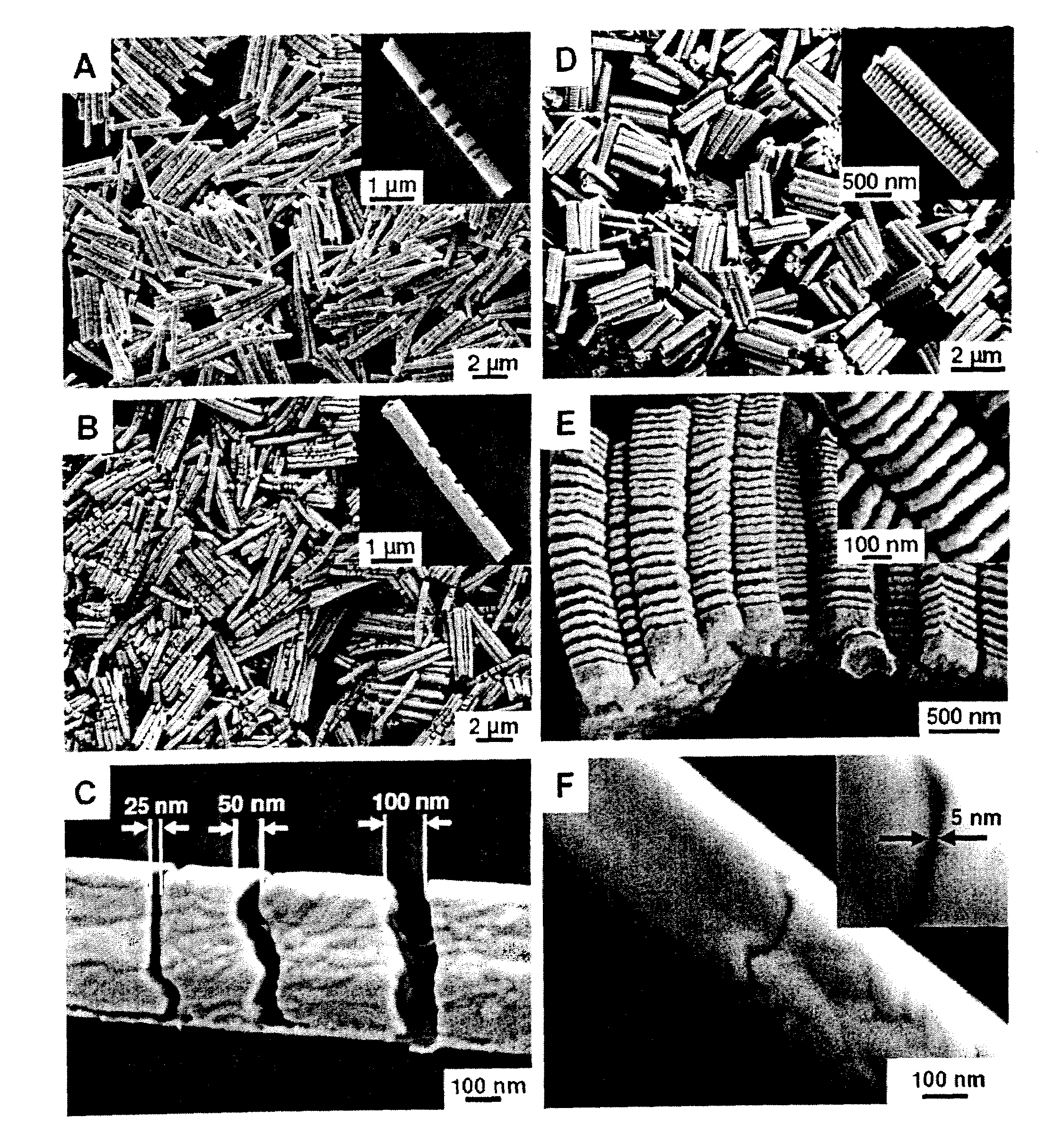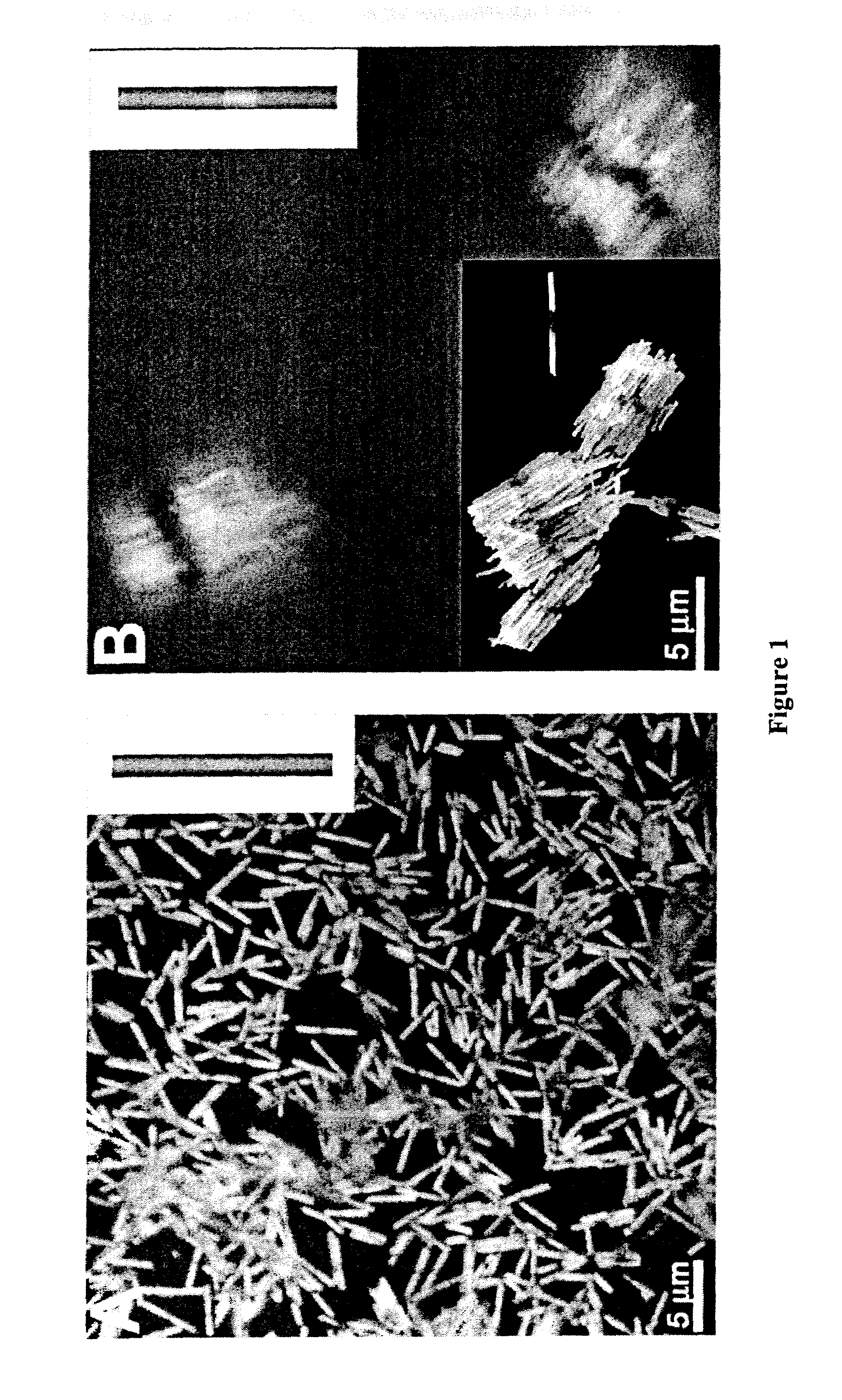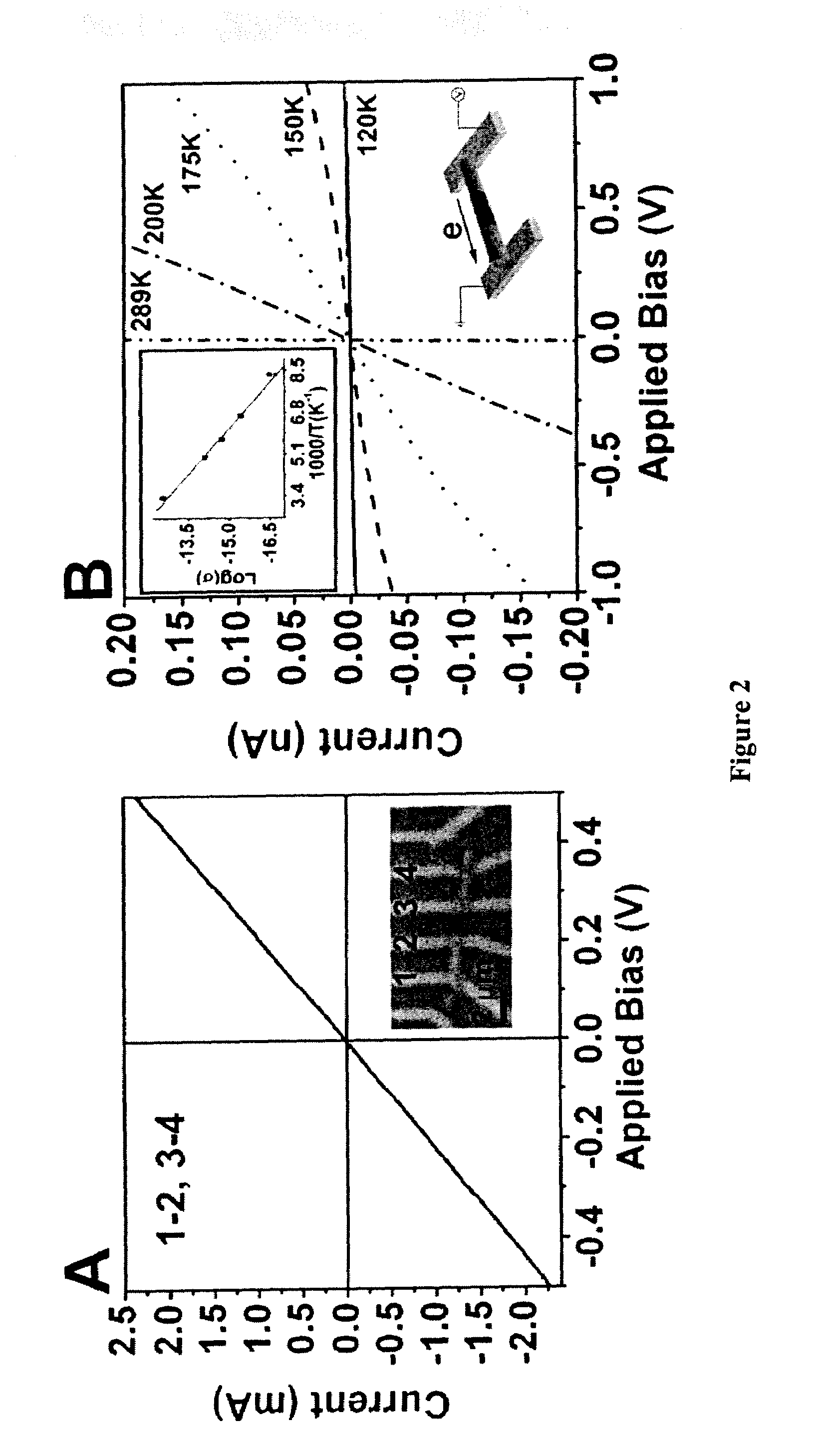Multicomponent Nanorods
a nanorod and multi-component technology, applied in the field of nanoscale compositions, can solve the problems of low throughput, material compatibility, resolution, cost, etc., and achieve the effect of high level of precision
- Summary
- Abstract
- Description
- Claims
- Application Information
AI Technical Summary
Benefits of technology
Problems solved by technology
Method used
Image
Examples
examples
Synthesis of Multicomponent Metal-Conducting Polymer-Metal Nanorods
[0074]In a typical experiment, a thin layer of silver (200 nm) was evaporated on one side of an alumina filter (Whatman International Ltd, d=13 mm, pore size—20 nm; the pore diameter in the central region of the filter is substantially larger than the quoted 20 nm) and served as a cathode in a three electrode electrochemical cell after making physical contact with aluminum foil. Platinum wire was used as a counter electrode, and silver / silver chloride (Ag / AgCl) was used as the reference electrode. The nanopores were filled by the electrochemical deposition of Ag (Technic ACR silver RTU solution from Technic, Inc.) at a constant potential, −0.9 V vs. Ag / AgCl, by passing 1.5 C / cm2 for 30 minutes. An Au segment then was electroplated from Orotemp 24 RTU solution (Technic, Inc.) at −0.9 volts (V) vs. Ag / AgCl followed by a conducting polymer segment from various plating solutions at positive potentials. For Ppy segments, ...
PUM
| Property | Measurement | Unit |
|---|---|---|
| size | aaaaa | aaaaa |
| voltage | aaaaa | aaaaa |
| temperatures | aaaaa | aaaaa |
Abstract
Description
Claims
Application Information
 Login to View More
Login to View More - Generate Ideas
- Intellectual Property
- Life Sciences
- Materials
- Tech Scout
- Unparalleled Data Quality
- Higher Quality Content
- 60% Fewer Hallucinations
Browse by: Latest US Patents, China's latest patents, Technical Efficacy Thesaurus, Application Domain, Technology Topic, Popular Technical Reports.
© 2025 PatSnap. All rights reserved.Legal|Privacy policy|Modern Slavery Act Transparency Statement|Sitemap|About US| Contact US: help@patsnap.com



